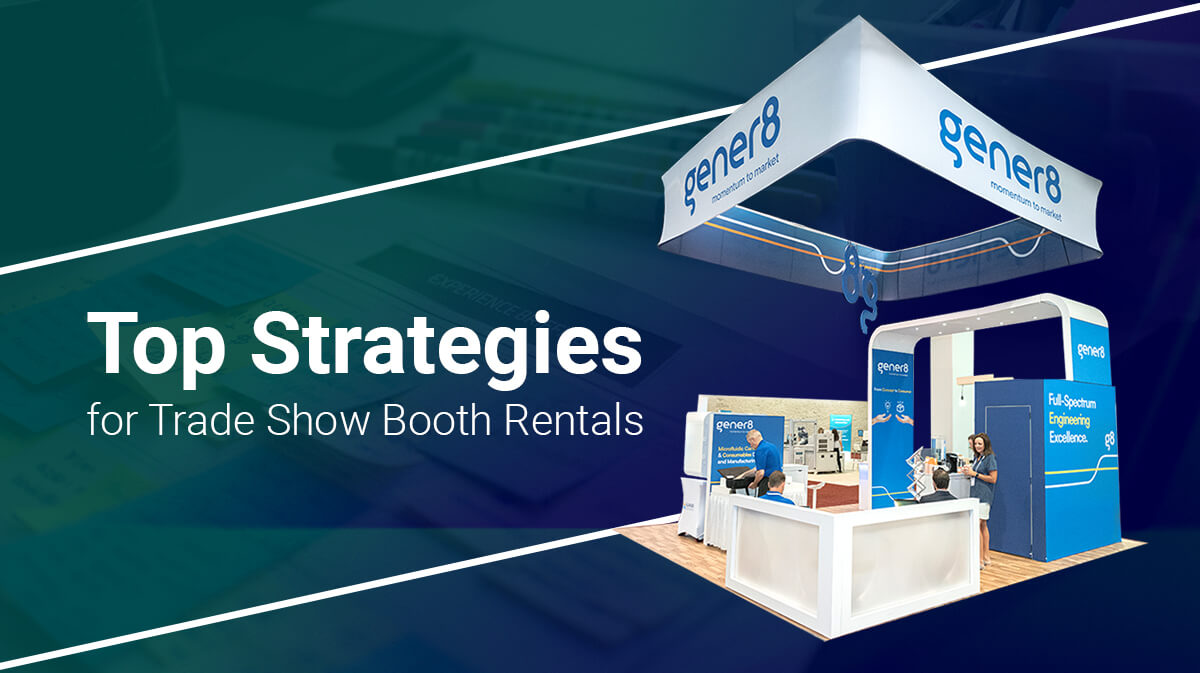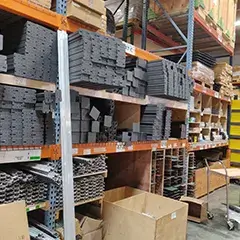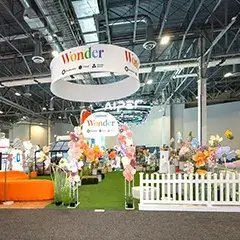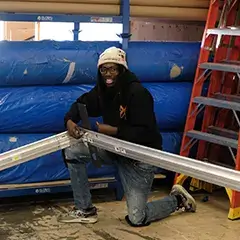
27 Tactics for Impactful Trade Show Booth Rentals
The new financial year is underway and every brand is working on its marketing strategy. Given the fact that trade shows are an inseparable part of the marketing strategy of every brand, it makes enormous good sense for your marketing team to streamline your trade show participation with these awesome trade show booth rental strategies.
1. Identify Product Categories that Need To be Promoted Through Trade Shows
 First, identify the product categories that need to be promoted through trade shows. Your trade show booth strategy shall revolve around the choice of the products by your marketing team.
First, identify the product categories that need to be promoted through trade shows. Your trade show booth strategy shall revolve around the choice of the products by your marketing team.
Brainstorm on the product particulars and identify the stages of the sales life cycle these are going through. That should set the tone for your trade show marketing strategy.
2. Define the Target Audience Profile of Visitors Your Brand Must Reach Out to
Second, ask yourself about the relevant people that you want to reach out to. Identify the target customer profile and the visitors that are likely to attend the trade show.
Think through the social, economic and demographic segments that your visitors are likely to come from. These particulars of information shall enable your marketing team to visualize the physical ambiance you need to create on the floor of the trade show.
3. Define the Business Objectives to be Accomplished through Trade Shows
Third, define the business objectives that your marketing team needs to accomplish at the trade shows. Opt for the classical business school approach. Identify the goals and key result areas (KRAs). Doing so shall enable you to visualize the next steps in your trade show rentals strategy one step at a time.
 4. Research on the Value Creation Potential of Trade Shows
4. Research on the Value Creation Potential of Trade Shows
Fourth, research on the value creation potential of the trade shows. Ask your marketing team to dig through the available sources of data.
Seek crisp and objective numbers against metrics like costs, likely footfall, hourly variation in traffic in the previous editions of the trade shows, number of brand exhibitors, numbers of blue-chip corporations and micro, small and medium enterprises and finally the visitor engagements.
The research on the value creation enabled by a trade show shall form the basis of the financial planning of your marketing team.
5. Research on the Costs of Participating in the Trade Shows
Fifth, research on the costs to be incurred on participating in the trade shows. Come up with individual cost estimates for each of the major trade shows that you have targeted.
Keep an eye on the detail across different scenarios. Do a scenario analysis for projections to get a holistic picture of the costs.
6. Budget a Total Outlay and Break it Down for the Individual Trade Shows
Sixth, work on the total outlay that your finance department can afford to bear. Map the outlay for each trade show against the expected value to be derived from participating in it.
Do not commit the mistake of excessively simplifying the number crunching by pulling out figures for average costs.
7. Prepare a Trade Show Calendar
Seventh, prepare a trade show calendar. Mark all the events on a Microsoft Office or Google calendar and send invites to each member of the marketing team to collaborate and chase the deadlines.
Make sure that the entire team is using the same software application for the calendar and is aware of the co-dependencies of work to be done.
8. Define the Value Proposition That you Want to Showcase
Eighth, define the value proposition to be demonstrated at the trade shows. Brainstorm on the corporate marketing strategy. Engage with sales representatives and gather their feedback and insights to prune the value proposition that you wish to demonstrate at the trade shows.
Check for options to customize across events but do not allow vast inconsistencies. For example, if your brand offers a value-based offering at a San Francisco trade show, it should ideally speak the same language in Oregon, Boston and elsewhere in the country.
9. Define the Linguistic Profile of the Audience for Each of the Trade Shows
Ninth, assess the linguistic profile of the audience that your brand is likely to come across at the trade show. Make sure that you assess the need for pluralism in content across the board if you are likely to be dealing with a multi-ethnic and cosmopolitan group.
For example, Chicago has a fairly cosmopolitan crowd with a substantial presence of German speaking people. It makes enormous good sense to go bilingual with the content across touchpoints where ever possible.
 10. Define a Communication Strategy for Each of the Trade Shows
10. Define a Communication Strategy for Each of the Trade Shows
Tenth, once your marketing team has an idea about the target audience it makes enormous good sense to bring the marketing executives of your team for creative brainstorming sessions.
It is advisable to create a contest and ask different marketing executives to work on different themes and showcase ideas through PowerPoint presentations and then take a call.
11. Register for Participation in the Trade Shows in Advance
Eleventh, register for participating in the trade shows that your marketing team has shortlisted. Make sure that your marketing team engages with the respective trade show organizers and collect insights on early bird discounts.
Explore the best bargains in terms of not just the costs but also capturing the prime locations at the trade show centers.
12. Set Up a Marketing Team for Participating in the Trade Shows
Twelfth, decide on the finest personnel for donning ambassadorial roles at the trade shows. Make sure that the chosen candidates are not tasked with other responsibilities during the dates marked on the trade show calendar.
13. Research on the Most Efficient Logistics and Hotel Accommodation
 Thirteenth, research on the modes of logistics and available accommodation in the cities where the trade show marketing team needs to travel. Identify the best bargains and look for local conveniences while selecting a hotel.
Thirteenth, research on the modes of logistics and available accommodation in the cities where the trade show marketing team needs to travel. Identify the best bargains and look for local conveniences while selecting a hotel.
14. Create a Dedicated Landing Page on the Website
Fourteenth, create a dedicated landing page on the website of your company. Leverage the content on the landing page to share information on the trade shows that your brand is participating in and generate leads from the incoming traffic.
15. Run an Email Marketing Campaign
Run an email marketing campaign ahead of every trade show. Make sure that you gather local information on the invitees and send them invitations for trade shows being held in the city of their current location.
 16. Leverage Microsoft Office 360 or Google Suite to Synchronize Data
16. Leverage Microsoft Office 360 or Google Suite to Synchronize Data
Sixteenth, make sure that all members of your marketing team and even those outside the team but associated with the trade show make use of a single software application suite for email communication, sending invitations, marking dates on the calendar app and saving details of leads on the contact list for seamless transfer of data through API.
17. Engage with Your Trade Show Booth Designer
Seventeenth, engage with your trade show booth designer and builder. Organize at least two meetings. First convey your requirement, if possible through simulation or through visuals of trade show rental booths of competitors to explain the booth design your brand needs.
18. Ask for a Cost Estimate for the Trade Show Booth Rental
Eighteenth, ask your trade show booth rental partner to share cost estimates. For that matter, it shall make sense to choose a trade show booth rental that offers open prices with no risks of add-on billing, hidden costs and precise commitment of the deliverable items.
19. Select a Booth That is Unique
Nineteenth, engage with your trade show booth rental partner to explore options for a custom trade show rental booth design that is unique and best explains what your brand stands for. Make sure that the design is close to industry standards but different from those of competing brands.
20. Ask for a Dedicated Project Manager
Twentieth, ask your trade show booth rental partner for a dedicated resource as a single point of contact for all necessary requirements of your trade show project. Streamline the communication tools and if required lean on a project management software application.
21. Coordinate with the Trade Show Organizers and the Rental Booth Designer
Make sure that the three stakeholder groups are on the same page: your trade show marketing team, the organizers of the trade show and your trade show booth rental partner are on the same page with regard to the guidelines of participation in the trade show and the timelines.
22. Deploy Tech to Run the Videos of the Latest TVCs at the Trade Show
Lean on technology to add dimension to your brand storytelling. Make sure that the most popular TVC advertisement films are shown during the trade show as well. Maintain a parity across all forms of content spreading across all touch points.
23. Create a Thumbnail with the Logo of the Brand for All Video Content
Create a thumbnail with the logo of the brand. This makes a great psychological impact on the visitors. The more of the brand logo that the visitors get to see across touch points; the more they shall be inclined to learn about the brand.
24. Ask Invitees to Share Questions and Business Challenges
Next, reach out to the invitees before the trade show. Send them a questionnaire asking them about their toughest biggest challenges as on date and going into the future. Keep the questionnaire semi-structured with the option to add their individual observations and comments.
 25. Engage with Product Managers and Sales Managers to Create Solutions
25. Engage with Product Managers and Sales Managers to Create Solutions
Use the insights collected from your pre-trade show market research to sell solutions at the trade shows.
While it may not be possible to translate these insights into new products, it does give your marketing team the elbow room to improve the sales pitch, positioning of your brand and the marketing collateral.
26. Keep Point of Sale Hardware Ready for Onsite Sales
Plan for online payments and receipts using point of sale hardware at the trade show. Your marketing team does not want to lose out on the opportunities for onsite sales during the trade show.
27. Create Custom Thank You Notes for Visitors
One last thing before your marketing team makes a dash for the trade show. Don’t forget to craft customized “thank you” notes for visitors that take the pains of responding to your trade show invitation or even show up without an invitation. Make them feel special and appreciate their efforts.

